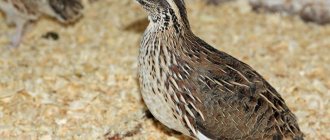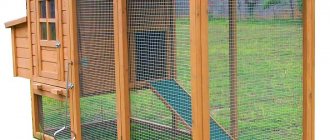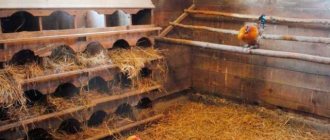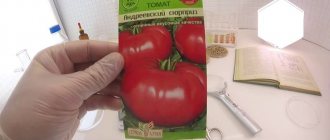1 919
no comments yet
0
Author of the article
Ryzhakova Evgenia
Reading time: 2 minutes
Light is not only illumination of the interior of the chicken coop, but also an important nuance for birds, which affects their health and reproduction. If the chicken house is well equipped and lit, the birds will be active, healthy and will produce more eggs or meat, depending on the breed of the chicken coop inhabitants.
24-hour lighting of the chicken coop is categorically not recommended: the birds will not produce healthy offspring, will not be able to gain weight and remain healthy. In the light they rush, and in the dark they rest and grow.
Lighting Features
Chickens naturally have poor eyesight. And in winter there is less light, so it is necessary to provide the bird with artificial lighting. In this way, it is possible to reduce losses due to a decrease in the productivity of chickens: with the right light, the birds continue to actively lay eggs. Find out about the characteristics of the Amrox chicken breed here.
With normal lighting, young animals grow and develop better and gain weight well.
Regarding aspects of illumination, it is important to pay attention to two main points:
- light intensity;
- lighting brightness.
Proper adjustment of these two parameters allows you to achieve:
- reduction of egg pecking by brood hens;
- optimal development of young animals;
- reducing the timing of seasonal molting;
- ensuring the chickens find water and feed as quickly as possible.
Insufficient lighting may be one of the reasons why young chickens do not lay eggs.
Adjusting the duration of lighting will help achieve the following goals:
- accelerating the development of young birds;
- increasing the appetite of chickens;
- reducing the molting season;
- optimization of the beginning and timing of egg laying.
As a rule, the need for additional lighting of the chicken coop arises in our climate starting in October. If you do not take care of solving this problem, chickens may stop laying eggs or significantly reduce productivity.
Too bright a light for a chicken coop is also useless. In such an intensely lit room, chickens usually become cocky, aggressive, and restless: bright light has a bad effect on their natural biorhythms and psyche. For example, it will be enough to equip a ten-meter area of a chicken coop with one 60-watt light bulb. You may also be interested in information about what needs to be done to get chickens to lay eggs in winter.
The video shows general information about lighting in a chicken coop:
Advantages and disadvantages
Winter lighting of the chicken coop has both its advantages and disadvantages. Below we will consider these important aspects in detail.
pros
Thanks to artificial lighting, the egg production of chickens in winter does not decrease: this is a unique way of deceiving natural biorhythms. If you leave the birds in poor natural light, the poultry farm will suffer losses. Additional lighting will allow the young to develop better and will relieve chickens from some diseases that arise in conditions of high humidity, dampness and darkness. Artificial light will help you quickly and conveniently carry out morning and evening feeding of birds. This article will tell you about the description of the Plymouthork chicken breed.
Minuses
Artificial lighting disrupts the natural biorhythms of birds. In winter, chickens usually molt, and at this time they also need to make up for the lack of calcium formed during active summer egg production.
Due to the fact that additional lighting is built in the chicken coop in winter, the bird’s body does not have time to recover.
Due to the lack of a break in laying, birds get sick more often, and the eggs themselves are more often defective.
Artificial lighting is a fire hazard: especially if it is made hastily with violations of technology. And due to the fact that electricity costs a lot, the cost of maintaining a chicken coop increases. It is also very important to make nests for laying hens with your own hands in the right place.
The video shows all the pros and cons of lighting a chicken coop in winter:
Catering for chickens in winter
Helpful tips to follow:
- In winter, chickens are given food three times a day. This is explained by the fact that chickens spend a lot of energy trying to warm themselves. In turn, energy enters the body along with food. Dry food is given in the morning and evening, and mash is added at lunch. Prolonged digestion of food provides birds with energy and, accordingly, warmth.
- In winter, the diet should include hay that was dried in the summer. It is useful to give chickens nettles and branches of coniferous trees.
- Combining different feeds is effective. Don't forget about fresh vegetables, wet mash and boiled porridge.
- Sunflower cake and seeds are added to the main feed. The body reacts positively to sprouted grain.
- Fish oil is added to roughage. In small quantities it supports the body well. Various poultry food manufacturers offer bone meal and a variety of vitamin and mineral supplements.
- Food rich in protein can increase egg production in chickens. Cottage cheese is periodically mixed into the food. Whey is used for drinking.
- To strengthen the bones, birds are given chalk, small shells, and sand. Crushed and dried eggshells have exactly the same effect. Such additives strengthen the shells of eggs, which is also very important.
As for drinking bowls, they should always be clean. If the chickens do not have time to drink the water, make sure that it does not stagnate and change it to a new one. In winter, warm water is poured into the drinking bowls.
Poultry farmers recommend having both winter and summer drinkers in your arsenal.
Beginning poultry farmers often make mistakes when feeding chickens. They give too much food, worrying that poor nutrition will not cause serious problems. This way the chickens eat more food than they need. As a result, they gain excess weight, become inactive, and do not lay eggs well.
An adult bird consumes 130-150 g of feed per day. This indicator helps to calculate the required amount of food for the entire herd.
Lighting mode and duration
Let's find out what winter lighting schedule in the chicken coop can be considered optimal. It is also worth dwelling on the question of how to properly feed laying hens and with what.
First, it is necessary to focus on the fact that in different parts of the chicken coop the degree of lighting brightness should be different:
- It is recommended to install lamps with a brightness of about 69 Lux at the feeder and next to the drinking bowl;
- in places where birds hatch eggs - 0.5-1 Lux, which is quite dark, almost twilight;
- in a nursery for newborn chickens - about 30 Lx, and for chickens that have already grown up - 5 Lx;
If only females are kept in the room, then in the center of the room lighting with a brightness of 5-10 Lux will be sufficient. And if there is a rooster, then the brightness must be increased to 15 Lux.
In order to lay eggs normally, fully develop and feel good, a chicken needs 12-14 hours of daylight. Therefore, in winter they start turning on the lights in the chicken coop early - from about six in the morning. And when it finally dawns, you can turn off the lamps. In the evening, the lights are turned on when it starts to get dark outside, and you can turn them off, setting the chickens up for sleep, as early as 20 o’clock. When making chicken nests with an egg collector with your own hands, it is important to pay attention to certain points.
DIY lighting
Let's consider the main points on equipping a chicken coop with artificial lighting.
Number of lamps
To calculate how many lamps are needed, you need to know exactly the power of the latter. The optimal and standard ratio is 1 W of power per 1 sq. m of chicken coop area.
Do not forget to distribute the lamps correctly, taking into account that in some of them the brightness and intensity of lighting should be lower.
If the chicken coop room is large, you will need several lighting lines: this is most likely impossible without the help of professional electricians. Read about breeding Ameraucana chickens here.
The video shows the organization of lighting in the chicken coop:
Lamp location
The lamps must be placed in the chicken coop in such a way that you do not bump into them with your head when walking, but you must be able to repair or replace them without the help of stepladders and ladders. Therefore, the ceiling height in a chicken coop is usually approximately 1.8-2 m. Find out about the maintenance and care of the Wyandotte chicken breed at this link.
It is better to hang not just bare lamps, but to protect them with translucent shades: such protection will protect the lamps from dirt, moisture and dust. Choose lampshades that are strong enough to last a long time and not break.
Wiring
When you run electrical wires, keep in mind that the very center of the coop usually has the highest humidity. Therefore, the main communications should run outside the premises - this will be safer. The shield should also not be inside the chicken coop. This material will tell you about the description of the Foxy Chick chicken breed.
Automatic system in the chicken coop in winter
In order for the light to turn on and off at a certain set time, electrical equipment is usually installed, equipped with a relay with a timer configured as required.
Using this convenient function, you can adjust the intensity and brightness of the lighting, set the desired mode for turning the lamps on and off.
However, if the chicken coop is small in size, then it would be more rational and expedient not to spend money on automatic lighting, but to either unscrew some of the lamps yourself, reducing the light intensity, or replace them with less powerful ones if necessary. Or you can buy an inexpensive Chinese timer with limited functionality, which will fully justify the investment in it.
A lamp with a timer will allow you to forget about adjusting the lighting.
The wiring is laid according to the usual pattern. The same applies to the installation of lamps. Just be sure to consider the power of the lamps depending on the area of the chicken coop. It is better to fasten the lamps with metal corners for reliability. But in addition to lighting, it is worth worrying about what to feed so that they lay eggs well.
The video shows lighting in a chicken coop using a timer:
How to arrange everything
A bright room will be convenient not only for the chickens, but also for the staff. When arranging a lighting system, it is important not to forget that it should be different in each zone. Near feeding areas you will need brighter light, but near nesting houses or near perches it is recommended to limit yourself to twilight.
Much depends on the size of the poultry house. Cage maintenance involves installing lamps over the passages in the spaces between cells. The lighting line is located at such a height that it does not interfere with workers, but at the same time it can be easily reached for technical work. It is recommended to cover all lamps with shades to prevent dust and moisture from settling on them. Painting the ceiling red or blue will reduce the number of pecking and cases of cannibalism in chickens.
A simple relay can turn the light on and off, which means the system will be fully automated.
What are the advantages and disadvantages of certain lamps:
Low price. Easy to maintain. It is environmentally friendly. Has a good spectral light range. Can be used for spot heating.
It is not relevant to use on a large poultry farm due to high energy consumption.
Durability. Easy to maintain and install.
They have a flickering effect that is invisible to humans but irritating to birds. Poor spectral range. Recycling of used lamps is necessary.
Low power consumption. You can select the required light spectrum.
High price. Inability to adjust brightness. In the poultry house they do not work out their full term. The need to recycle used lamps.
Long-term operation. Hard to damage. Good light spectrum. Easy to maintain. You can adjust the intensity. Low power consumption.
Timer with sensor and smooth transition
It is recommended to equip the chicken coop with a timer, as this device can make the life of a poultry farmer much easier. You can choose the simplest model: if the chicken coop is small and the flock is small. The timer is plugged into a power outlet or connected to lighting wiring. Each device requires setting up a specific program: you need to select it. Usually, anyone with at least a little knowledge of technology can easily handle the setup.
After setting up and checking the mode, the poultry farmer can sleep peacefully: the light in the chicken coop will turn on and off at a strictly defined time. And if you purchase a more advanced timer, you can also adjust the decrease/increase in light intensity, decrease/increase its brightness in certain areas of the room. When organizing the proper maintenance of chickens, it is worth taking care of the bacteria in the litter.
The video shows how to set a timer with a smooth transition for a chicken coop:
Types of lamps
The chicken coop can be equipped with various lamp options - let’s take a closer look at the strengths and weaknesses of the latter.
Incandescent lamps
This option is the most budget-friendly, and also environmentally friendly compared to others. Incandescent lamps are easy to use, uncomplicated, easy to change, they additionally warm the room a little, and shine quite well. Such lamps can also be used at cold temperatures, as well as for spot heating, say, cages with chickens. Disadvantage: short service life.
Such lamps are also installed for room disinfection.
How to carry out LED lighting at night and during the day
Such lamps have a long service life (more than 50 thousand hours). Now manufacturers produce, among others, special models of LED lamps intended for poultry farms.
This option is simple and unpretentious in operation, and can operate at different external temperatures. In addition, the LED lamp is economical, resistant to moisture, dust, and dirt. It is possible to regulate the lighting intensity, which is important in this case. The only downside is the high price, but such a lamp pays for itself very quickly.
Fluorescent lamps for automation of lighting for laying hens
Also a great option for a chicken coop. Fluorescent lamps emit smooth white light, are durable and reliable. In addition, the price of these models is lower than that of LED ones, and in terms of efficiency they are not inferior to the latter. The disadvantages include the need to dispose of fluorescent lamps and their lack of environmental friendliness.
Energy saving
Such lamps will allow you to reduce energy costs, as well as customize exactly the lighting spectrum that is needed. Disadvantages: expensive, not environmentally friendly (mercury), and the need for disposal. In addition, many farmers complain that in poultry house conditions, energy-saving llamas for some reason serve much less than the period stated by the manufacturer. In addition, by adjusting the lighting, you can reduce the stress of birds when they are caught for slaughter, wing trimming, and vaccination.
As for the color of the lamps, the optimal choice would be white. But if it is possible to equip lamps of different shades, then keep in mind that:
- blue calms;
- orange has a beneficial effect on reproduction;
- under red lamps birds do not peck eggs;
- They grow better under green ones.
So, we got acquainted with the features of winter lighting for a chicken coop. With proper lighting, chickens will lay eggs in winter as well as in summer, and the young will quickly grow. As you can see, there is nothing difficult in equipping a chicken coop with the necessary lighting yourself. Using the tips from the article, you can provide the chicken coop with the necessary light, and the birds with all the conditions for successful growth and development. But it’s worth paying attention to how to organize feeding laying hens at home in winter.
Important information about overheating
In chickens, the visual apparatus is structured differently than in humans.
Accordingly, they perceive light differently. So, if a person in light twilight can easily recognize various objects, then for a bird this level of illumination is practically no different from complete darkness.
This is the first reason why chickens need lighting. Without it, the hen will not be able to navigate, find food or a nest.
But this is far from the only explanation for why birds need good lighting. It is believed that daylight hours for chickens should last from 12 to 14 hours a day.
This value is most favorable for the chicken body.
If it drops to the 10 o’clock mark and below, then this is fraught with the following consequences:
- decreased egg production in laying hens;
- later onset of puberty in young animals;
- weight loss;
- thinning the walls of the eggs and reducing their size;
- deterioration of the bird's feather cover;
- weakened immunity;
- slowdown of metabolism, which is the main reason for the decrease in the growth rate of chickens.
It is worth noting that excessively long daylight hours also negatively affect chickens. During the period of complete darkness, during sleep, the bird’s body better absorbs the nutrients and minerals received from food during the day.
In addition, it is in complete darkness that the bone tissue of the skeleton is best formed in young animals.
Therefore, the 24-hour lighting practiced by some poultry farmers is also erroneous.
The world's climate is changing rapidly. And extremely high temperatures in summer have been observed by weather forecasters for decades. Changeable weather does not allow the thermoregulation mechanism of chickens to quickly adapt to new conditions.
A healthy chicken has a normal body temperature of approximately 41-42 degrees. If the ambient temperature increases by 5 degrees, the bird’s body will activate the process of thermoregulation.
The chickens will begin to actively exhale hot air to cool down. And drink plenty to prevent dehydration.
Under such conditions, the birds' stomachs fill with water. They stop eating. Go to the toilet more often. This washes away the nutrients needed to form the egg. Meat chickens lose weight dramatically.
In case of severe heat stroke, natural cooling is not enough. Dehydration sets in and the chicken falls.
With mild heatstroke, the bird becomes lethargic. She loses her appetite. Anxiety and loss of coordination appear.
If measures are not taken in time, additional symptoms may occur.
The chicken constantly opens its beak. Can't catch his breath. Breathes frequently and shallowly. Combs and earrings become pale. The bird loses consciousness and falls.
At the second stage of heat stroke, saving the bird is problematic. It may not be possible to revive her. Fainting undermines the health of the chicken. And disrupts the normal functioning of organs.
Emergency help
If the symptoms were detected in a timely manner, then the chicken can be returned to its normal state in less than two hours.
The following measures should be taken urgently:
- Move it to a shade or cool place.
- Gradually reduce body temperature. For example, cover with a wet cloth. Sudden cooling can lead to cardiac arrest.
- Drink with water or saline solution (10 grams of salt per liter of water).
To prevent heatstroke, it is not recommended to let birds out in the hot sun. It is necessary to regularly refresh drinking water.
You definitely need to watch your diet. Feeding chickens on hot days should be light: fresh plant food, minimal grains. Corn or potatoes should be excluded.
Electric fans inside the coop will improve air exchange.











